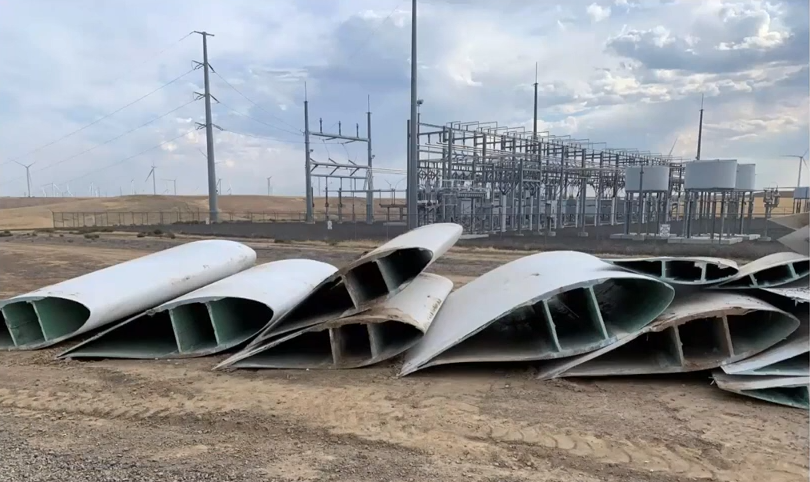Energy Facilities Spotlight: Decommissioning
Wind turbine blades are recycled from the Shepherds Flat facilities during a re-powering effort.
When Oregonians turn on the lights, their power is coming from a number of resources – from renewable resources like wind and solar to fossil fuel-based generation like natural gas. While some electricity is imported into the state, much of our electricity comes from facilities built right here in Oregon. Many large facilities are reviewed and monitored at the state level, so what happens when one of these facilities has reached the end of its life? The Energy Facility Siting Council — a volunteer, seven-member decision-making body appointed by the Governor and staffed by the Oregon Department of Energy — has established requirements for what happens to the land where facilities are sited, as well as what happens to equipment, like wind turbines and solar panels, when they are decommissioned.
During the original application process for a state-jurisdiction facility, the Council ensures that project developers have the expertise to not only construct and operate a project, but to also retire the facility and restore the site to a useful, non-hazardous condition when the facility permanently closes. That requirement also stands if a facility begins construction but decides not to complete the project – the developer must still return the site to a useful, non-hazardous condition.
The Council also requires a bond or letter of credit to be in effect at all times until the facility is retired. This is in case a project owner is unable or unwilling to complete those decommissioning steps. A bond or letter of credit will provide resources to ensure the state can restore the site if the developer does not. The Council determines the amount for that bond or letter of credit, called the “retirement cost.” One example is from the largest permitted solar project in Oregon, the Obsidian Solar Center, which has a retirement cost of $28.3 million.
As solar soars in popularity, how can we make sure more materials are recycled at the end of their life?
Oregonians often ask what happens to wind turbines, solar panels, and batteries when they are no longer operational. The Council requires a materials analysis during the application process and has a standard to minimize waste. The Council also recommends conditions that applicants must agree to, including, when possible, reuse or recycling plans – such as a project solar panel recycling plan, a requirement to use reused or recycled wind turbines to the extent practicable, or annual reporting on the quantities of removed wind turbine components and how they were disposed.
Learn more about the Energy Facility Siting Council, its standards, and the many projects under review or operating in Oregon on ODOE’s website.


